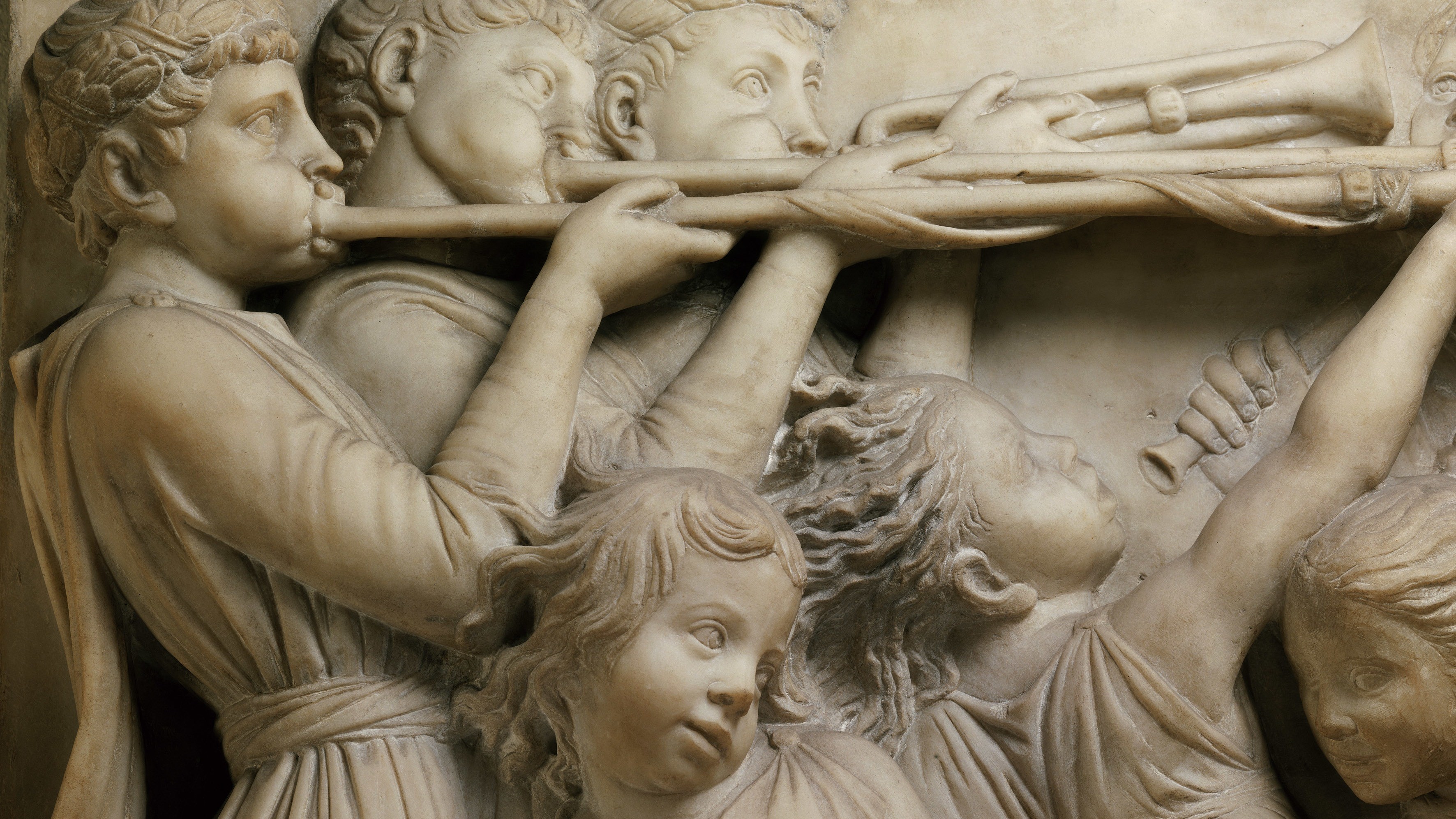“I consider that music is, by its very nature, essentially powerless to express anything at all,” wrote Igor Stravinsky, provocatively, in his 1935 autobiography.
Listen to Stravinsky’s monumental Symphony of Psalms, completed five years earlier in 1930, and you may disagree. There is nothing remotely sentimental in the cool, neoclassical architecture of this music. It would be hard to put into words what is being “expressed.” Yet what emerges is powerful, moving, and transcendent.
Set in three movements which are played without pause, Symphony of Psalms moves from lonely isolation and wandering, to rebirth, to joyful exultation. These are literally expressed in the work’s text: Psalms 38, 49, and 150. But it’s when we move beyond the threshold of the literal that the real magic happens. Just listen to the way Symphony of Psalms unfolds with its sense of motion and color. The seamless integration between orchestra and chorus is almost frightening in its perfection. (Stravinsky specified children’s voices for the upper two choral parts). The composer offered this description:
It is not a symphony in which I have included Psalms to be sung. On the contrary, it is the singing of the Psalms that I am symphonizing.
Symphony of Psalms occupies a unique sound world which is bright and austere, the result of its unusual instrumentation. The orchestra includes two pianos and a band-like component of winds (there are five flutes), and omits clarinets, violins, and violas.
The first movement is set in motion by a single, striking “plunk.” The composer Arthur Berger noted that this E-minor triad is “like no E-minor triad that was ever known before.” It is voiced in a way that emphasizes the third (G) and creates a stark separation between the high and low register. As the movement develops, a dizzying ostinato evokes the atmosphere of the text, “I am a stranger with thee, and a sojourner.”
The second movement develops as a double fugue in C minor, with echoes of the pristine counterpoint of Bach. The opening subject is stated by the solitary oboe, followed by an array of voices. This is music filled with haunting shadows, mystery, and revelation. It seems to deliver us to the doorstep of the final movement, which opens with a chillingly hushed “Alleluia.”
The mystery and awe of this opening is cut off by joyfully raucous celebration (the “sound of trumpet, timbrel and choir…”). Boisterous triplets in the horns and piano were inspired by a vision of “Elijah’s chariot climbing the Heavens.” In the remarkable final moments of the third movement we experience what Stravinsky called, “the calm of praise.” The pianos, harp, and timpani form a solemn procession, with E-flat, B-flat, and F alternating like bells tolling in a dream. We drift off into an endless sea of peaceful serenity and innocence which seems to exist beyond time itself. The music closes with the purity and finality of C major, spread from the highest to the lowest registers of the orchestra.
English translation of the text
First Movement (excerpts from Psalm 38):
Hear my prayer, O Lord, and my supplication: give ear to my tears. Be not silent: for I am a stranger with thee, and a sojourner as all my fathers were.
O forgive me, that I may be refreshed, before I go hence, and be no more.
Second Movement (excerpts from Psalm 39):
With expectation I have waited for the Lord, and he was attentive to me.
And he heard my prayers, and brought me out of the pit of misery and the mire of dregs. And he set my feet upon a rock, and directed my steps.
And he put a new canticle into my mouth, a song to our God. Many shall see, and shall fear: and they shall hope in the Lord.
Third Movement (excerpts from Psalm 150):
Alleluia. Praise ye the Lord in his holy places: praise ye him in the firmament of his power.
Praise ye him for his mighty acts: praise ye him according to the multitude of his greatness.
Praise him with sound of trumpet…
Praise him with timbrel and choir: praise him with strings and organs.
Praise him on high sounding cymbals: praise him on cymbals of joy:
let every spirit praise the Lord. Alleluia.
Five Great Recordings
- Pierre Boulez, Berlin Philharmonic, Rundfunkchor Berlin (This 2000 recording is featured above). Amazon
- Robert Shaw, Atlanta Symphony Orchestra and Chorus Amazon
- Sir Georg Solti and the Chicago Symphony Orchestra
- Daniel Barenboim and the Orchestre De Paris
- Igor Stravinsky and the Columbia Symphony
Photograph: A panel inspired by Psalm 150 from the Cantoria, Luca della Robbia, Florence, 1431

